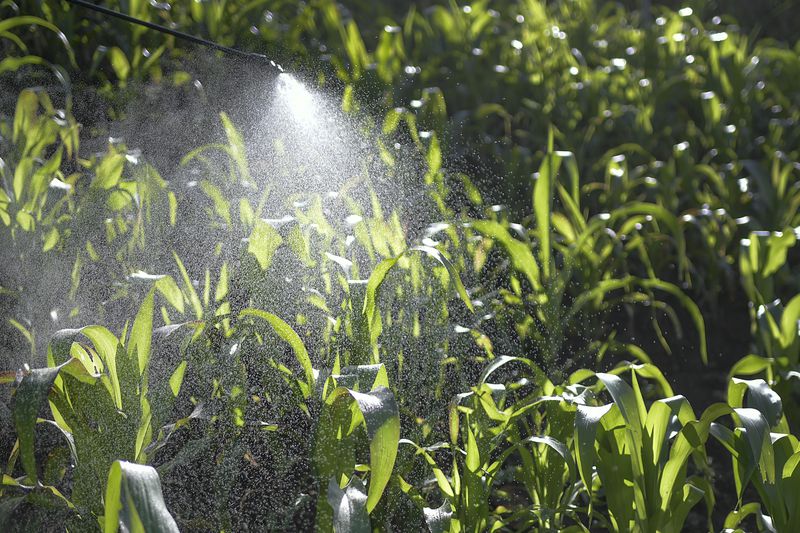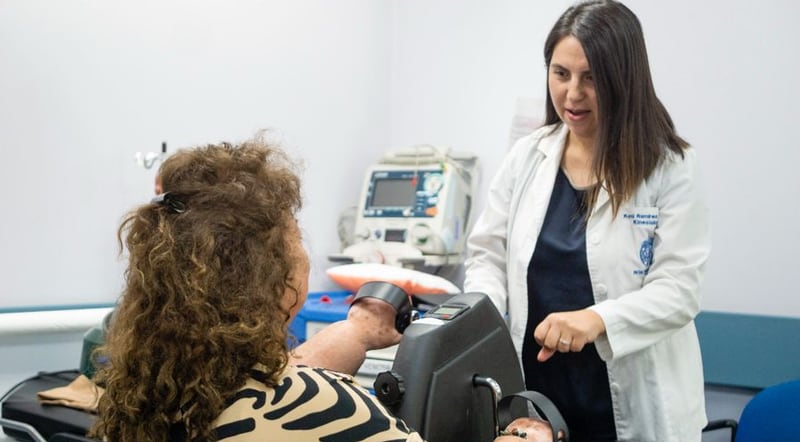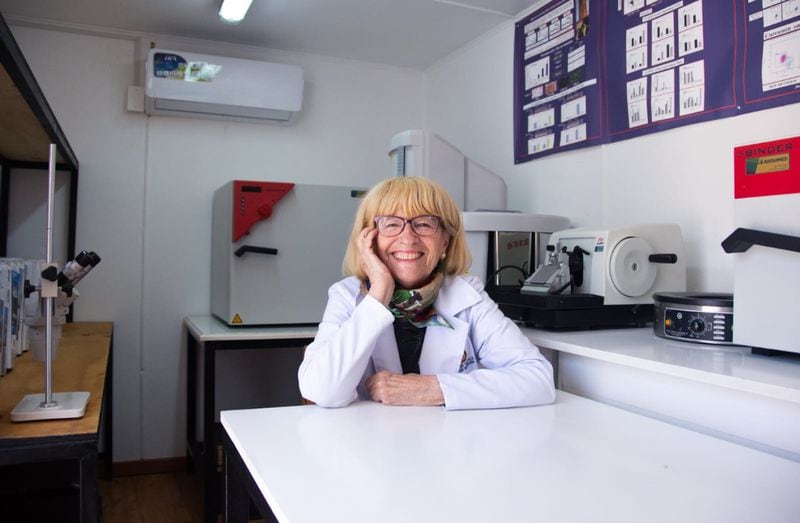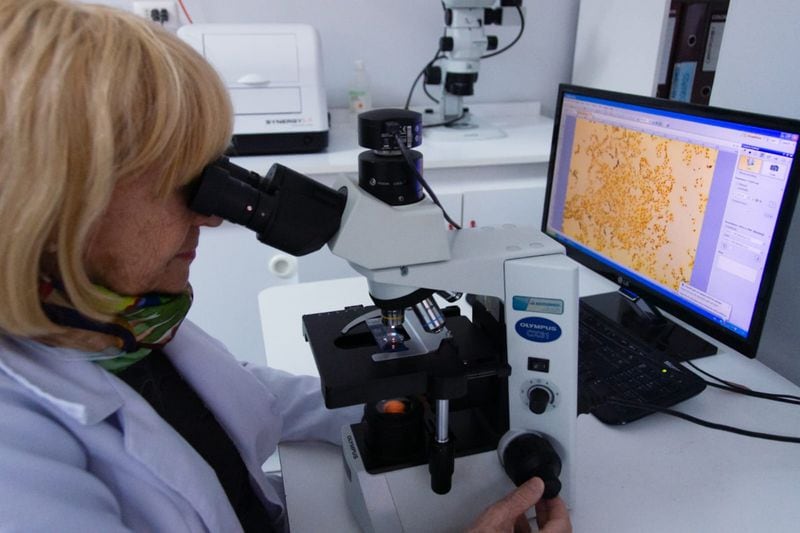Harmful substances that remain in the air when spraying in fields and other places pose a greater risk and danger to women than to men, due to a reaction of the chemicals against the female hormone.
The use of organophosphate pesticides represents a risk for women’s health, since according to various scientific research, they can cause breast cancer .
In this context, “women who live and work in agricultural areas are more likely to be diagnosed with this disease,” explains Gloria Calaf, researcher at the Higher Research Institute of the University of Tarapacá.
According to the Chilean scientist, who has spent decades studying environmental and hormonal carcinogenesis through breast cancer study models. in vivo And in vitro, “they are exposed to products containing malathion, parathion and glyphosate those that remain in the tissues and are absorbed by the skin.
Although women are at greater risk of suffering from this condition, due to a chemical reaction to the female hormone, It could also affect men.
They could be in your garden: these are the pesticides that can cause cancer
Calaf explains that “these substances remain in the air, so when we carry out fumigations, all people are exposed,” But women are at greater risk because of estrogen and other characteristics that can make this exposure more dangerous than for men. Although men face other diseases and other risks, if we talk about breast cancer, it is women who are in the greatest danger.
He also says that one of the big problems is that farm workers “take their clothes home and those clothes contain pesticides, and ladies wear these clothes, they hang around and are absorbed into the skin.

In addition, there is concern that these substances are also present in cities, within everyone’s reach since there are products for residential use that contain these elements. “Malathion, parathion, and glyphosate are commercially available organophosphate pesticides that people buy to use as herbicides, for example. Let’s imagine that people who have plants in their garden are very proud because they use something to kill insects and it turns out that they harm themselves. because you are exposed to these pesticides that contain toxic and carcinogenic substances that remain in the air,” says Calaf.
The academic from the University of Tarapacá is one of the most eminent researchers in the world and has contributed to advancing molecular studies on the role of organophosphate pesticides as well as ionizing radiation through experimental models in the presence of hormones, such as estrogens, which pose a risk to women’s health.
These studies have demonstrated that these pesticides trigger cancer of the mammary gland of rats, specifically ductal breast cancer, and in the presence of estrogen, lobular cancer. These two substances mixed together gave rise to metastases to the lungs, liver and kidneys.
Thus, parathion and malathion as well as glyphosate, now widely used, led the International Cancer Center (IARC) to to consider them as probably or possibly carcinogenic to humans.
Pesticides cause cancer in women
In Dr. Calaf’s field of work, studies have focused on researching possible therapies such as the use of chemotherapeutic drugs and other naturally occurring substances like turmeric,n antioxidant with great potential to attack malignant cells and keep normal cells alive.
“Our research seeks to understand the possible relationship between the pesticide and muscarinic receptors, that is, its relationship with the nervous system and, therefore, with estrogen receptors, since pesticides have the capacity to modify a enzyme, acetylcholinesterase, which plays an important role in the nervous system. It is very important to understand the role of estrogen receptors in breast cancer, as they have played a key role for many years in determining the treatment to be followed in patients with cancer. just like tamoxifen, it saved many lives,” says Calaf.
“We are currently studying the role of hormone receptors such as estrogen and prolactin, in relation to acetylcholine, in breast carcinogenesis, that is, environmental substances and the nervous system. So the neuroendocrine system. However, today we continue to focus on understanding the mechanism by which these pesticides cause the disease and it has been found that estrogens play a fundamental role, making this cancer affect women more,” adds- he.

Another factor studied is ionizing radiation, which comes from radon, a gas naturally found in the environment. My studies have shown that it also causes breast cancer and that estrogen also plays a role in the development of the disease.
In the lyrics In these models, the 10 signals indicating that a substance is carcinogenic were studied in order to understand the development of this disease under the effect of alpha radiation and estrogens. Among these signals are cell proliferation, alterations in cell membrane receptors, genome instability, translated by changes in the transition from epithelial cells to mesenchymal cells, among others that occur in cancer.
Calaf says 15% or 20% of the population has a genetic predisposition that some people have activated. And he adds that this can be detected with certain tests like those carried out by actress Angelina Jolie, “She tested positive and had a bilateral mastectomy, so she prevented the cancer from developing.”
30 days: pesticides can cause cancer
Genetic tests are done by taking a blood test, when the sample is transferred to an expert genetics laboratory in Chile, the result takes approximately 30 days, and there are specialized laboratories throughout the country. The identification of genes involved in breast carcinogenesis induced by environmental and endogenous substances is of crucial importance to better understand the mechanisms involved, according to the researcher.

“My studies have been based on the demonstration and understanding of these processes, including the prevention of breast cancer in the field of experimentation. I began by demonstrating the effect of pure chemicals such as dimethylbenzanthracene (DMBA), benzopyrene (BP) and many others in a normal cell line and culture them in systems in vitro for a long time until it turns into a malignant cell. Explain.
Dr. Calaf has studied environmental and hormonal carcinogenesis with the development of breast cancer study models. in vivo with experimental animals and in vitro with human cells, understanding the processes of initiation, promotion and prevention of breast cancer.
She was on the cover of “The International Journal of Oncology”, which highlighted it in June 2023 for having identified numerous genes associated with cancer and fundamental in the transformation process due to environmental factors such as pesticides, heavy metals, as well as endogenous substances associated with the risks of breast cancer such as hormones, age, family history, benign lesions, hormone therapy but also physical agents such as ionizing radiation.

The scientist regrets that in Chile there has not been a real awareness of the risks of these pesticides for a percentage of the population, “Unfortunately, these products continue to be sold. I am in Arica, and there is an exposed population, because here there are valleys, and in these valleys we use pesticides that should not be used and they sell them under other names, and they come from the outside and apply them in the same way. Therefore, this control, I do not know if it has been done, the important thing would be that epidemiological studies are carried out among the population of the Lluta and Azapa valleys.
Calaf has published approximately 180 articles in scientific journals of international impact, several book chapters and has been invited to numerous conferences and symposia to present her research in many countries around the world.
Furthermore, I was invited to join a project by the Halifax Group in Canada, relating to a theme that called “Llegando a conocer el cancer” in order to understand the carcinogenic potential of the exposure of chemical mezclas in low doses from the environment. Currently, participates as an evaluator of carcinogenic substances that will be studied by the IARC, belonging to the World Health Organization, during the years 2024 to 2030.
Source: Latercera
I am David Jack and I have been working in the news industry for over 10 years. As an experienced journalist, I specialize in covering sports news with a focus on golf. My articles have been published by some of the most respected publications in the world including The New York Times and Sports Illustrated.


